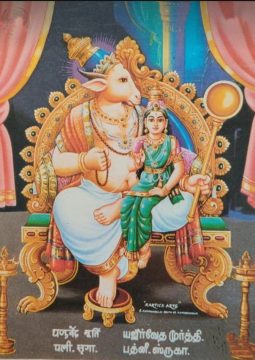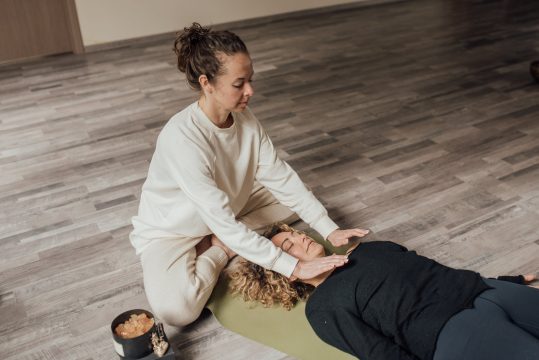- You have no items in your shopping cart
- Continue Shopping

Meditation is a mental practice that involves training your attention and awareness to achieve a calm and stable state of mind. To learn meditation, you can start by finding a quiet and comfortable place to sit and focus on your breath. There are many different types of meditation techniques, such as mindfulness meditation, loving-kindness meditation, and body scan meditation, to name a few. You can explore and experiment with different techniques to find the one that works best for you. It’s also helpful to establish a regular meditation routine and be patient with yourself as you develop your practice. There are many resources available, such as meditation apps, guided meditations, and books, that can help you learn and deepen your meditation practice.
Mindfulness meditation is a type of meditation that involves focusing your attention on the present moment, without judgment or distraction. It can be done by sitting in a quiet place, closing your eyes, and directing your attention to your breath, body sensations, or other objects of focus. When your mind inevitably wanders, you simply notice the distraction and gently bring your focus back to the present moment. Through regular practice, mindfulness meditation can help you develop a greater sense of self-awareness, reduce stress and anxiety, and improve overall well-being.
Loving-kindness meditation is a type of meditation that involves cultivating feelings of love, compassion, and kindness towards oneself and others. It typically involves silently repeating phrases, such as “may I be happy, may I be healthy, may I be safe,” or “may you be happy, may you be healthy, may you be safe,” while focusing on the feelings and sensations associated with those phrases. This practice is designed to promote positive emotions and social connection, and can help reduce negative emotions such as anger, anxiety, and depression. Loving-kindness meditation can be done on its own or as part of a larger mindfulness practice.
Body scan meditation is a type of meditation that involves systematically focusing your attention on different parts of your body, from your toes to the top of your head, in a mindful and non-judgmental way. This practice is often done lying down or sitting, and involves bringing your attention to each part of your body, noticing any sensations or feelings you may be experiencing, and then moving on to the next part of your body. The purpose of body scan meditation is to increase self-awareness, reduce stress and tension, and promote relaxation
Third eye meditation is a type of meditation that involves focusing your attention on the “third eye” area, which is the space between your eyebrows, in order to increase intuition, clarity, and inner wisdom. This practice is based on the idea that the third eye is a center of spiritual power and insight in the body. During the meditation, you can sit comfortably with your eyes closed and focus your attention on the third eye area, while also taking slow, deep breaths. Some people also visualize a glowing light or color in the third eye area to help focus their attention. Third eye meditation can be done on its own or as part of a larger meditation practice.
Jaap meditation, also known as Japa meditation, is a type of meditation that involves repeating a mantra or sacred word or phrase in order to focus the mind and cultivate inner peace and spiritual connection. The word “jaap” comes from the Sanskrit word “japa,” which means repetition of a sacred word or phrase. During the practice, you can sit comfortably and repeat your chosen mantra or word silently to yourself or out loud, focusing your attention on the sound and vibration of the word. This practice is commonly associated with Hindu and Buddhist traditions, but can be adapted and practiced by people of all spiritual backgrounds. There are many different mantras to choose from, and you can select one that resonates with you or seek guidance from a teacher or mentor
Transcendental Meditation (TM) is a specific form of mantra meditation that was developed by Maharishi Mahesh Yogi in the 1950s. The practice involves the use of a specific mantra or sound that is repeated silently in the mind in order to quiet the mind and promote deep relaxation and transcendence. During the practice, individuals sit comfortably with their eyes closed and repeat their personal mantra for 20 minutes, twice a day. TM is known for its simplicity and is easily accessible to people of all ages and backgrounds. It has been researched extensively and has been found to have a number of potential benefits, including reducing stress and anxiety, improving focus and creativity, and enhancing overall well-being. If you are interested in learning TM, it is recommended that you seek out a certified TM teacher, as they can provide personalized instruction and support
Progressive relaxation is a technique used to help individuals achieve a state of deep relaxation by systematically tensing and then relaxing different muscle groups in the body. During the practice, individuals typically lie down in a comfortable position and focus their attention on each muscle group, tensing it for a few seconds, and then releasing the tension while focusing on the feeling of relaxation in the muscle. The practice typically begins with the feet and moves up through the body, progressing to the legs, hips, abdomen, chest, arms, hands, neck, and face. This technique can help reduce stress and anxiety, improve sleep, and promote overall relaxation and well-being
Movement meditation is a type of meditation that involves using intentional movement and physical activity to cultivate mindfulness and awareness in the present moment. Unlike traditional seated or still meditation, movement meditation involves gentle movement, such as walking, stretching, dancing, or yoga, to help focus the mind and connect with the body. During the practice, the emphasis is on being present and mindful of the movement, rather than achieving a specific goal or outcome. This type of meditation can be particularly helpful for those who find it difficult to sit still or prefer more dynamic forms of mindfulness practice. Movement meditation can be done on its own or as part of a larger meditation practice, and there are many resources available, such as classes, workshops, and online tutorials, that can help you learn and develop a movement meditation practice.
So as we see above there can be numerous ways to learn and practice meditation however the key to success is regular practice .
Bhairav Dutt(8920152103)




